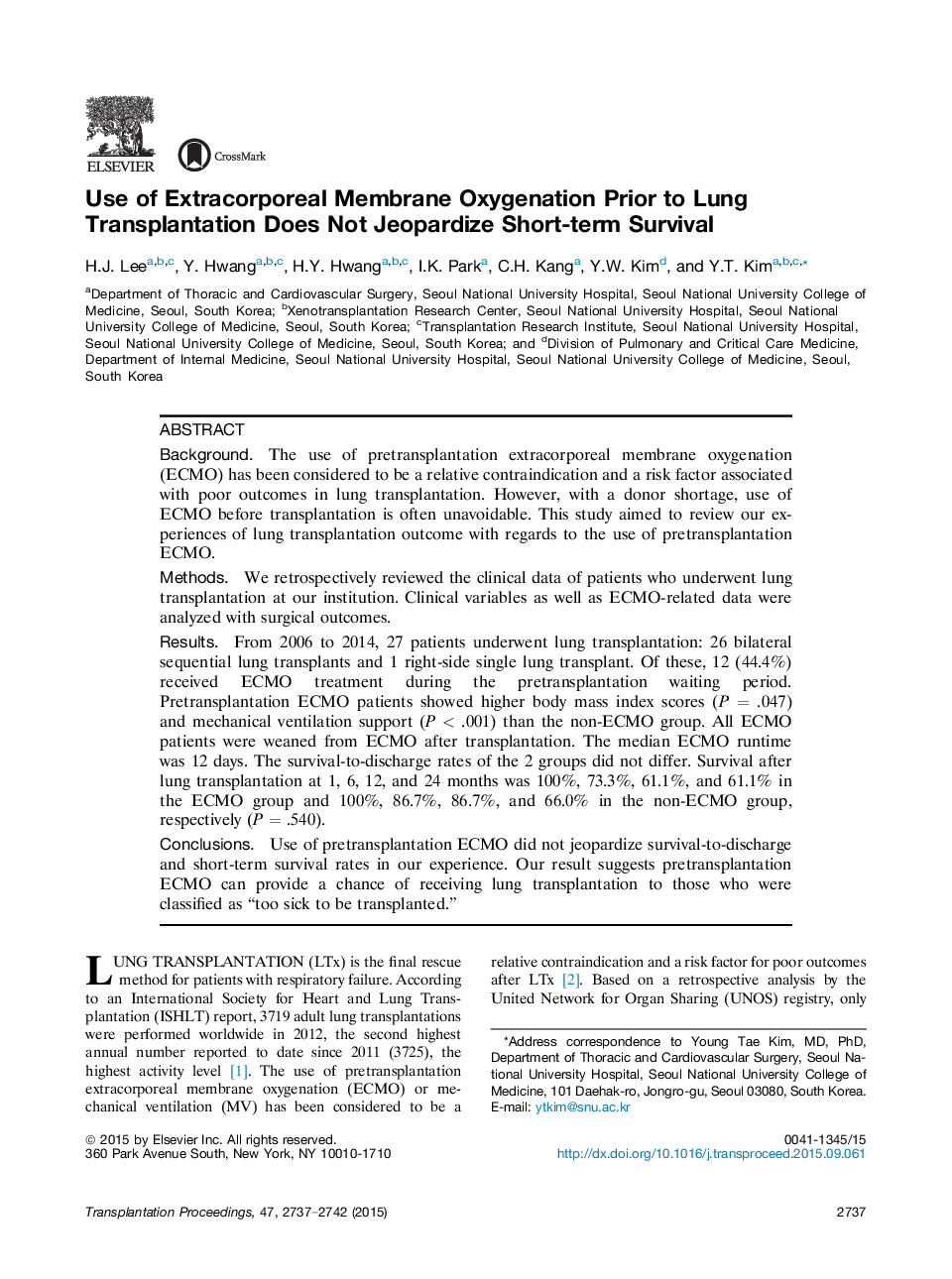| Article ID | Journal | Published Year | Pages | File Type |
|---|---|---|---|---|
| 4255923 | Transplantation Proceedings | 2015 | 6 Pages |
•Use of pretransplantatopm ECMO did not jeopardizee the short-term survival rate.
BackgroundThe use of pretransplantation extracorporeal membrane oxygenation (ECMO) has been considered to be a relative contraindication and a risk factor associated with poor outcomes in lung transplantation. However, with a donor shortage, use of ECMO before transplantation is often unavoidable. This study aimed to review our experiences of lung transplantation outcome with regards to the use of pretransplantation ECMO.MethodsWe retrospectively reviewed the clinical data of patients who underwent lung transplantation at our institution. Clinical variables as well as ECMO-related data were analyzed with surgical outcomes.ResultsFrom 2006 to 2014, 27 patients underwent lung transplantation: 26 bilateral sequential lung transplants and 1 right-side single lung transplant. Of these, 12 (44.4%) received ECMO treatment during the pretransplantation waiting period. Pretransplantation ECMO patients showed higher body mass index scores (P = .047) and mechanical ventilation support (P < .001) than the non-ECMO group. All ECMO patients were weaned from ECMO after transplantation. The median ECMO runtime was 12 days. The survival-to-discharge rates of the 2 groups did not differ. Survival after lung transplantation at 1, 6, 12, and 24 months was 100%, 73.3%, 61.1%, and 61.1% in the ECMO group and 100%, 86.7%, 86.7%, and 66.0% in the non-ECMO group, respectively (P = .540).ConclusionsUse of pretransplantation ECMO did not jeopardize survival-to-discharge and short-term survival rates in our experience. Our result suggests pretransplantation ECMO can provide a chance of receiving lung transplantation to those who were classified as “too sick to be transplanted.”
